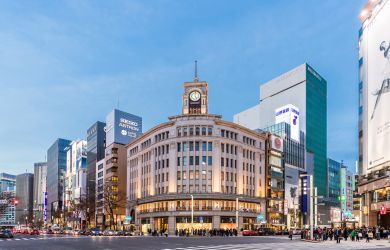
Originally published on metropolis.co.jp on March 2010

Gian Lorenzo Bernini, Portrait Bust of Cardinal Scipione Borghese, 1632, marble of Carrara, height 78cm
Galleria Borghese
Without rich, egoistical men of dubious morals, many of the great art collections and museums of the world simply wouldn’t exist. That’s the case with the works on display now at the Tokyo Metropolitan Art Museum.
“Galleria Borghese: The Splendid Collection of a Noble Family” presents about 50 pieces from the famous Borghese Gallery in Rome, an assembly of paintings and sculpture started by Cardinal Scipione Borghese. This paragon of the word “nepotism” was both the nephew of Pope Paul V (1605-21) and his self serving secretary.
Ruling the Papal States in his uncle’s name, the cardinal managed to amass an immense fortune through religious fees and taxes, much of which he plowed into his art collection and the elegant palace he built on the outskirts of Rome to house it. Borghese was also a generous patron, nurturing the talent of the great baroque sculptor Bernini and supporting Caravaggio, master of the chiaroscuro painting technique.
Some attempt is made to recreate the aesthetic atmosphere of the cardinal’s luxurious palace within the redbrick modernist exterior and awkward spaces of the Tokyo Met. Bernini’s lively animated bust of the cardinal greets visitors at the entrance. Elsewhere, there are photos and videos showing the ornate marbled halls of the late-Renaissance palace. Given the theme of the exhibition, this is only to be expected, but inevitably the Met suffers by comparison. Better just to concentrate on the art!

Raphael, Portrait of a Lady with a Unicorn, 1506, oil on canvas mounted on panel, 67cm x 56cm
Galleria Borghese

Caravaggio, St. John the Baptist, 1609-10, oil on canvas, 152cm x 125cm
Galleria Borghese
The real test in a case like this—when a Japanese art venue loudly trumpets the name of a famous foreign museum—is whether or not it has secured the loan of any iconic works. Last year’s generally disappointing “Louvre” exhibitions at the National Museum of Western Art and the National Art Center, Tokyo by and large represented the dregs of that famous museum. In this case, however, the visitor is more fortunate. Besides the excellent bust by Bernini, the exhibition also presents some of the Borghese’s unquestioned treasures.
The most famous of these is Raphael’s Portrait of a Lady with a Unicorn (c.1506), a top-class painting by an artist who, along with Leonardo da Vinci and Michelangelo, is a member of the triumvirate of great Renaissance painters. Before setting brush to canvas, Raphael carefully worked out every detail of his compositions with sketches so that his paintings have a clean, light atmosphere. This painting is a good example, showing a woman holding the eponymous beast, often considered a symbol of virginal purity.
Another highlight is an anonymous, early-16th-century copy Leonardo da Vinci’s lost painting Leda, showing the Greek princess holding Zeus in the form of a swan with their children at their feet. Several copies of this work exist, with differing details, but all are dominated by the same elegant central motif.
Other impressive works gracing the exhibition are Botticelli’s Virgin and Child with the Infant St. John the Baptist and Angels (c.1488), Jacopo Zucchi’s Allegory of the Discovery of America (c. 1585), a riot of natural riches and nudes, and Orpheus (1618) by Marcello Provencale, an astounding work that initially looks like a painting but is in fact a fine grained mosaic.
An important work by Caravaggio hints at the seamier side of the cardinal, who is rumored to have been a pederast fond of adolescent boys. St. John the Baptist (1609-10), commissioned by the cardinal shortly before the artist’s death, shows the saint as a youth. But there is almost nothing saintly about this painting. The sensuous pose, slipping loincloth and knowing look of the subject give the work a decadent atmosphere and homoerotic vibe that sits uneasily with the angels and muses evoked elsewhere.
Tokyo Metropolitan Art Museum
Galleria Borghese: The Splendid Collection of a Noble Family. Painting. Until Apr 4, free (MS and under)/¥700 (univ)/¥800 (65 and over)/¥1,200 (univ)/¥1,400 (general). 8-36 Ueno Park, Taito-ku. Tel: 03-3823-6921. Open Tue-Sun 9am-5pm, closed Mon. Nearest stn: Ueno. www.tobikan.jp







